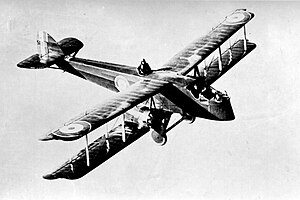| DH.11 Oxford | |
|---|---|
 | |
| General information | |
| Type | Bomber |
| Manufacturer | Airco |
| Designer | |
| Status | Abandoned |
| Number built | One |
| History | |
| First flight | January 1919 |
| Developed from | Airco DH.10 Amiens |
The Airco DH.11 Oxford (later de Havilland) was a British twin-engined biplane bomber which was designed to replace the earlier Airco DH.10 Amiens. It was designed to use the unsuccessful ABC Dragonfly engine and was abandoned after the first prototype was built.